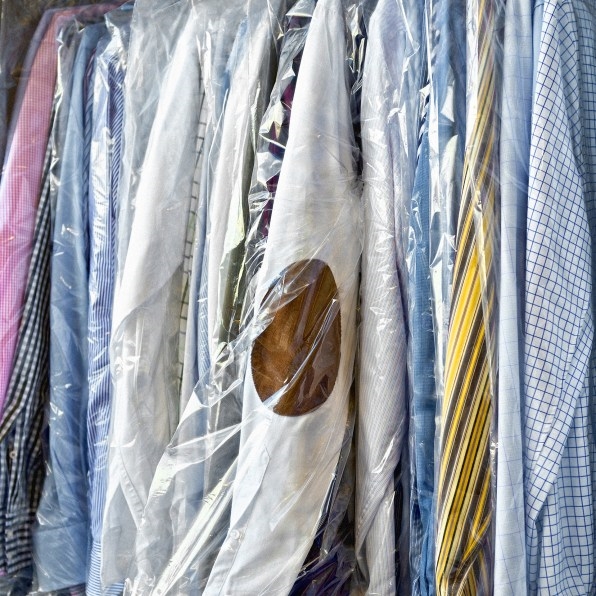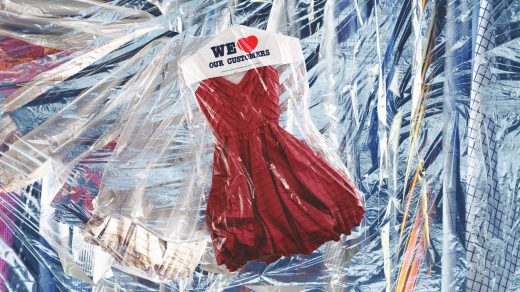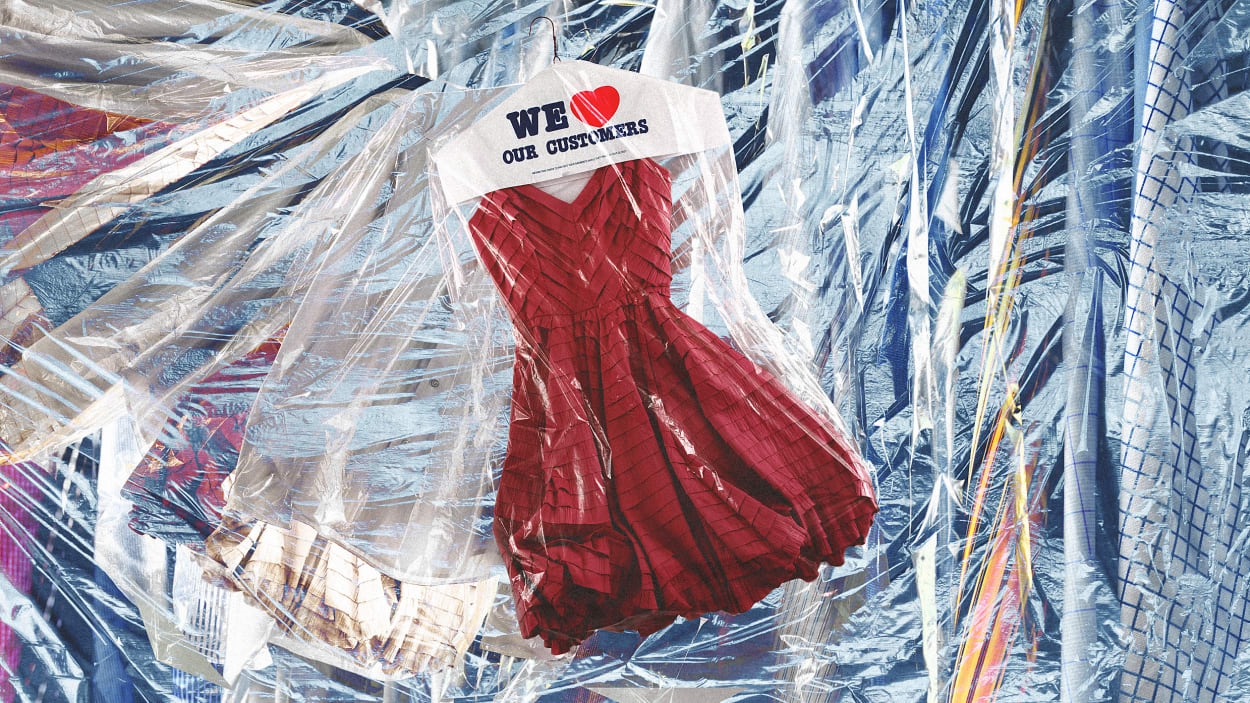It’s time for dry cleaners to stop using plastic film
There’s that unpleasant moment when you get home from the dry cleaner: You remove the plastic film covering your clothes, and since most curbside recycling programs won’t accept it, you have no choice but to throw it in the trash and feel guilty about how you’re contributing to the plastic pollution crisis.
You’re right to worry. Every year, dry cleaners use more than 300 million pounds of this plastic film in the U.S. alone. (They are sometimes known as poly bags because they are made from a kind of plastic known as polyethelene.) The vast majority—96%—will end up in a landfill or the ocean, where it will slowly break into particles that eventually end up in the food chain, and inside animals and humans. But it doesn’t have to be this way.
Beyond Plastics, an organization devoted to ending plastic pollution, is working on a new campaign to get plastics out of the dry cleaning industry. In a report, it points out that disposable plastic film isn’t necessary to protect freshly cleaned clothes, and that cheaper, more sustainable alternatives already exist on the market. But the report argues that dry cleaners will be slow to change on their own, so consumers need to speak up and ask their cleaners to change.
It’s a good time for us to rethink dry cleaning, says Judith Enck, Beyond Plastics president. During the pandemic, when offices closed and formal events were postponed, many dry cleaners had to shutter for long periods, and many closed altogether. But as life begins to return to normal and consumers need their services again, businesses have an opportunity to update their operations. “When it comes to plastic, we tend to focus a lot on single-use plastic in the food industry,” says Enck. “There isn’t a lot of discussion about it in the dry cleaning sector. As people return to work, they might see the enormous amount of plastic they bring home from the cleaners with new eyes.”

Dry cleaning was invented in 1821 by an African American abolitionist, inventor Thomas L. Jennings, who received a patent for a process he called “dry scouring” (a predecessor to modern-day’s drv cleaning methods), making him likely the first Black person in the U.S. to receive a patent. By the early 20th century, dry cleaning became increasingly popular in the U.S., and customers brought their own cloth garment bags to the stores for picking up their clothes. It wasn’t until the ’70s and ’80s that dry cleaners began covering clothes with thin, disposable plastic that comes in large rolls, dispensed automatically by machine. Now, this plastic is ubiquitous in the industry.
It doesn’t need to be. Beyond Plastics recommends that dry cleaners either eliminate outer coverings altogether or switch to reusable garment bags. Getting rid of bags is clearly the most sustainable option, but many dry cleaners don’t think it is a viable solution.”It’s possible to return clothes without a garment bag, but it’s not practical,” says David Meyer, who owns Elite Cleaners in Phoenix. “Clothes get dusty in the store, and they can get dirty or rained on if we’re delivering them to customers’ homes.”
But Meyer acknowledges it could be relatively painless to switch to reusable bags, which are now widely available on the market. Over the past two decades, several companies have popped up that create reusable bags specifically for dry cleaners. Some make them from cotton, like Idea Stage and Spector Textiles; others make them from sturdy plastic, like Green Garmento and Cleaners’ Supply. The idea is for the dry cleaner to send customers home with a reusable bag and ask for them to be returned with the next batch of clothes. They can either charge a deposit or give them away for free as a form of marketing.
In fact, these reusable bags are actually cheaper than the disposable alternative. Beyond Plastics’ research found that a typical dry cleaner, with 800 customers, pays $13,500 a year for plastic film; replacing them with reusable bags would cost $8,000 a year, a 40% savings. That said, reusable bags are more labor intensive to put on the garment, which means more staff time would be required, which could cut into any cost savings. But as Beyond Plastics spoke to dry cleaners, it found that many are hesitant to switch to these reusable bags, partly because they believe that customers expect the poly bags, and it represents a job well done. “It’s just how business has been done for decades,” says Enck. “And many cleaners are worried about messing with what works.”
Times are changing, however, and consumers are now increasingly worried about their environmental impact. Last year, a study by a pricing consultancy found that 85% of consumers globally have shifted their purchasing toward more sustainable alternatives over the past five years, and more than a third are willing to pay more for eco-friendly alternatives. Enck says that consumers can play a powerful role in changing dry cleaners’ practices by telling them directly that they don’t want plastic film and are willing to take their business to stores that have more sustainable options.
When Meyer switched to reusable garment bags last year, his customer base grew, and a flood of positive reviews appeared on Yelp and Google. “Dry cleaning is a highly competitive business, and there aren’t many ways to stand out from the next store,” he says. “But when people realized that we were different because we had these reusable bags, we were perceived as a friend to the environment and not overloading the waste system.”
He estimates that revenue increased by $160,000 last year, thanks to this new clientele. He doesn’t charge extra for these bags, and he’s found that regular customers are good about returning them. “My staff was surprised that we don’t seem to run low on bags because customers keep bringing them back,” he says. “Now, other cleaners in my market are switching to reusable bags, but I think we still stand out as a leader when it comes to sustainability.”
(24)



